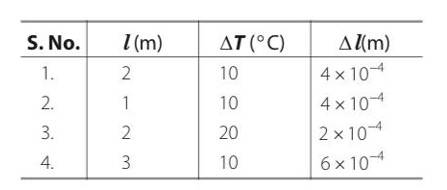Physics NCERT Exemplar Solutions Class 11th Chapter Eleven
Get insights from 50 questions on Physics NCERT Exemplar Solutions Class 11th Chapter Eleven, answered by students, alumni, and experts. You may also ask and answer any question you like about Physics NCERT Exemplar Solutions Class 11th Chapter Eleven
Follow Ask QuestionQuestions
Discussions
Active Users
Followers
New answer posted
5 months agoContributor-Level 10
This is a short answer type question as classified in NCERT Exemplar
Increasing pressure at 00C and 1 atm takes ice into liquid state and decreasing pressure in liquid state at 00C and 1 atm takes to ice state.
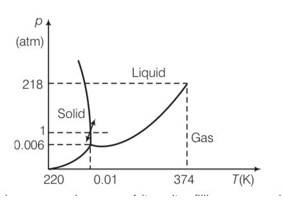
When crushed ice is squeezed, some of it melts, filling up the gap between ice flakes upon releasing pressure. This water freezes, binding all ice flakes and making the ball more stable.
New answer posted
5 months agoContributor-Level 10
This is a short answer type question as classified in NCERT Exemplar
Let the mass and length of a uniform rod be M and l respectively.
Moment of inertia of the rod about its perpendicular bisector I= ml2/12
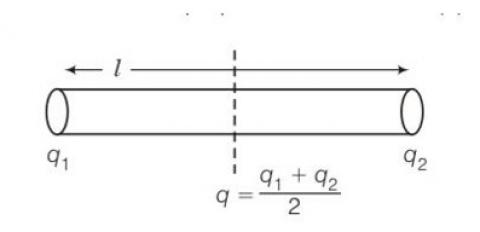
Increase in length of the rod when temperature is increased by T is given by
So new moment of inertia of the rod = =
As change in length is very small therefore neglecting so we get
I'= = l+mI
Increase in moment of inertia =
New answer posted
5 months agoContributor-Level 10
This is a short answer type question as classified in NCERT Exemplar
As copper is a good conductor of heat as compared to steel. The steel utensils with copper bottom absorbs heat more quickly than steel and give it to food in utensils. So, food heated uniformly and quickly.
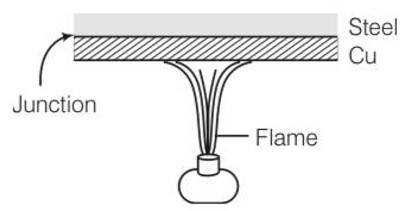
New answer posted
5 months agoContributor-Level 10
This is a short answer type question as classified in NCERT Exemplar
According to the formula
F=C=Q
= Q=-40C or 40F
New answer posted
5 months agoContributor-Level 10
This is a short answer type question as classified in NCERT Exemplar
Due to difference in conductivity metals having high conductivity compared to wood. On touch with a finger heat from the surroundings flows faster to the finger from metals and so one feels the heat.
Similarly when one touches a cold metal the heat from the finger flows away to the surroundings faster.
New answer posted
5 months agoContributor-Level 10
This is a short answer type question as classified in NCERT Exemplar
= oC-1
From next observation
From next observation
From next observation = so this value satisfies the equation.
New answer posted
5 months agoContributor-Level 10
This is a short answer type question as classified in NCERT Exemplar
As diathermic walls allow exchange of heat energy between two systems and adiabatic walls do not, hence diathermic walls are used to make the bulb of a thermometer.
New answer posted
5 months agoContributor-Level 10
This is a long answer type question as classified in NCERT Exemplar
(a) Power radiated by stefan's law
P= 4 R2)T4
= 5.67
= 1.78 =1.8
(b) Energy available per second U= 1.8 = 18 16J/s
Actual energy required to evaporate water = 10%of 18
=1.8 J/s
Energy used per second to raise the temperature of m kg of water from 300C to 1000C and then into vapour at 1000C
=msw +mL= m
= 2.93
As per question , 25.53 = 1.8
m=
(c) Momentum per unit time
P= U/c= 2
Momentum per unit time
Area p= p/4
d=47.7N/m2
New answer posted
5 months agoContributor-Level 10
This is a long answer type question as classified in NCERT Exemplar
Consider the diagram

Θ= θ1+ θ2/2
Let temperature varies linearly in the rod from its one end to other end, let θ be the temperature of the midpoint of the rod. At steady state
Rate of flow of heat,
dQ/dt =
where k is the coefficient of thermal conductivity of the rod
so θ1- θ= θ- θ2
θ= θ1+ θ2/2
L=L0 (1+ )
L= Lo (1+ )
New answer posted
5 months agoContributor-Level 10
This is a long answer type question as classified in NCERT Exemplar
By applying Pythagoras theorem in given figure
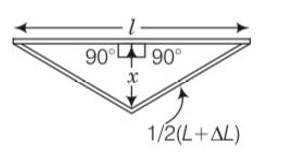
2
x=
=1/2
= ½
=1/2
As Increase in is very small so we neglect it
=1/2
By using this value in above in equation
x=1/2 = ½ L
=
= 5
= 5
Taking an Exam? Selecting a College?
Get authentic answers from experts, students and alumni that you won't find anywhere else
Sign Up on ShikshaOn Shiksha, get access to
- 65k Colleges
- 1.2k Exams
- 679k Reviews
- 1800k Answers

